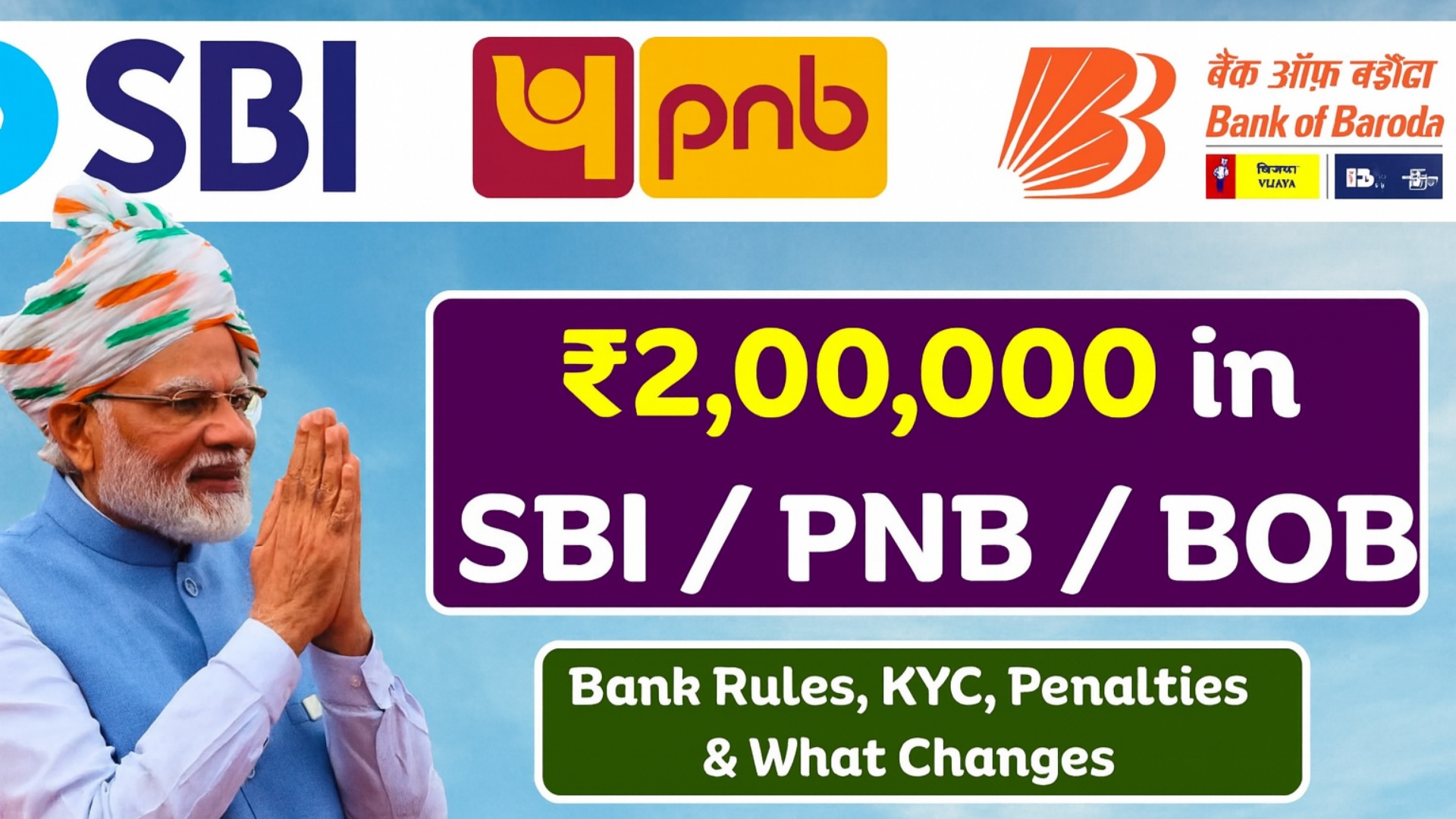What the ₹2 Lakh Threshold Means
Deposits, withdrawals or transfers around the ₹2,00,000 mark have gained special regulatory attention. Banks now treat transactions at and above this level as significant for monitoring purposes. Large cash deposits (or sometimes large transfer volumes) in savings accounts trigger additional compliance checks and may expose the account to regulatory scrutiny.
When someone deposits or withdraws ₹2 lakh or more in a single transaction (or sometimes cumulatively in a short span), banks check: Are the KYC details up-to-date? Is the source of funds properly declared? Is PAN linked with the account? These checks help prevent misuse of banking channels for money laundering or tax-evasion.
Key KYC & Documentation Rules
To continue smooth account operations when large transactions arise, here are important KYC / document requirements:
- Your Aadhaar, PAN, address proof and identity proof should be linked and updated with the bank.
- The bank may require you to link PAN with your savings account, especially when deposits or withdrawals hit or exceed ₹2 lakh.
- If you conduct large transactions (₹2 lakh+), but your KYC is outdated or incomplete, the bank may restrict your account — blocking further deposits, withdrawals or transfers until compliance is restored.
- Banks are required by the Reserve Bank of India (RBI) to classify customers by risk categories and carry out due diligence accordingly. If you are high-volume or high-value customer (frequent large transactions), you may fall into higher risk category and face tighter scrutiny.
How the Rules Affect Cash, Digital Transfers & Other Transactions
- Cash deposits: If you walk into a branch and deposit ₹2 lakh or more in one go, expect the bank staff to ask for PAN and source of funds.
- Digital transfers (NEFT / RTGS / UPI): Even though bank transfers are easier to track, large amounts (₹2 lakh+) may trigger verification. The bank might request KYC update or hold the transaction if the account is flagged.
- Withdrawals: Cash withdrawals of ₹2 lakh or more (or cumulative across the day) may similarly attract checks.
- Multiple transactions to circumvent: Splitting a large amount into smaller parts to avoid triggering the threshold does not necessarily avoid scrutiny — banks track patterns and may still flag suspicious activity.
Penalties & Consequences of Non-Compliance
If you fail to satisfy the KYC or documentation requirements and perform large transactions:
- The bank may freeze or restrict your account (no withdrawals, no transfers) until you update KYC and provide valid documents.
- Banks may apply service charges or penalties if transactions violate internal rules (e.g., cash deposits without proper PAN).
- On the regulatory side, the Income Tax Department or RBI may be alerted for unexplained high value transactions, which may lead to notices or investigations.
- You may lose interest or privileges if your account becomes inactive or non-compliant.
What’s Changing & What You Should Know Now
- Banks such as SBI, PNB and BOB are tightening operational compliance for large transactions (₹2 lakh+) to align with newer AML (Anti-Money Laundering), KYC and PMLA (Prevention of Money-Laundering Act) norms.
- RBI has updated its KYC master-direction and banks are now required to perform periodic “re-KYC” updates — meaning even existing customers must refresh their KYC documentation.
- The threshold of ₹2 lakh is not a cap on transactions — it is a trigger point for banks to apply enhanced checks. Depositing more is allowed, but you should ensure all documentation is accurate and up-to-date.
Tips to Stay Compliant
- Check your bank profile: verify if your PAN, Aadhaar, address and identity documents are linked and correct.
- Before depositing or transferring ₹2 lakh or above, ensure you can explain the source of funds (salary, business income, inheritance, etc.).
- If you receive a bank notice asking you to complete KYC or declare source, respond promptly — don’t ignore.
- Avoid “splitting” large cash deposits or transfers just to evade thresholds — banks monitor patterns.
- Keep records of large transactions: deposit slips, transfer references, statements — in case of future queries.
Final Word
Having ₹2 lakh or more show up in your transactions in SBI, PNB or BOB is perfectly fine — the key is to be compliant. Ensure your KYC is updated, PAN and Aadhaar are linked, source of funds is documented, and your account details are current. By staying proactive, you avoid restrictions, freezes or regulatory trouble.

